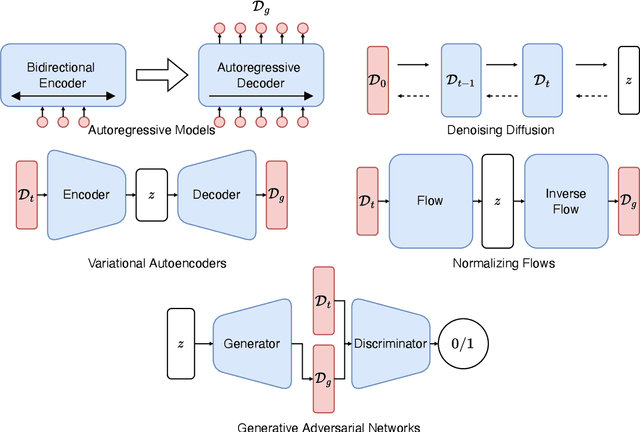Deep Generative Models for Detector Signature Simulation: An Analytical Taxonomy
Paper and Code
Dec 15, 2023


In modern collider experiments, the quest to explore fundamental interactions between elementary particles has reached unparalleled levels of precision. Signatures from particle physics detectors are low-level objects encoding the physics of collisions. The complete simulation of them in a detector is a memory and storage-intensive task. To address this computational bottleneck in particle physics, "Fast Simulation" has been introduced and refined over the years. The field has seen a surge in interest in surrogate modeling the detector simulation, fueled by the advancements in deep generative models. These models aim to generate responses that are statistically identical to the observed data. In this paper, we conduct a comprehensive and exhaustive taxonomic review of the existing literature on the simulation of detector signatures from both methodological and application-wise perspectives. Initially, we formulate the problem of detector signature simulation and discuss its different variations that can be unified. Next, we classify the state-of-the-art methods into four distinct categories based on their underlying model architectures, summarizing their respective generation strategies. We then identify and discuss three key application areas. Finally, we shed light on the challenges and opportunities that lie ahead in detector signature simulation, setting the stage for future research and development.
 Add to Chrome
Add to Chrome Add to Firefox
Add to Firefox Add to Edge
Add to Edge